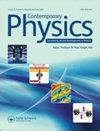量子互联网——第二次量子革命
IF 3.3
4区 物理与天体物理
Q2 PHYSICS, MULTIDISCIPLINARY
引用次数: 20
摘要
所有人都可以看到,互联网的出现使计算机和数字电子产品充分发挥了潜力。现在,随着全新类型的量子技术的出现,其早期演示正在成为现实,它们的全部潜力预计将不可避免地通过联网来揭示。这正是彼得的《量子互联网——第二次量子革命》一书的中心主题。罗德。量子时代才刚刚开始,但它已经表明,从量子计算开始,无数行业将发生革命性的变化。这本书然后提出了量子网络协议的早期制定和分析,通过描绘一个可能的未来量子互联网,资源可以共享和通信。从经典网络的描述开始,作者随后介绍了量子互联网协议,量子密码学和云量子计算的关键概念,通过详细检查所需的技术以及它将在经济和政治上产生的影响。事实上,量子计算能力的超经典缩放力给予了许多重要的经济和战略考虑所需的关注。量子计算机的经典等效能力可能会随着量子比特的数量呈指数级增长,因此经济指标可能会表现出与经典计算机不同的缩放特征和动态,从而导致后量子世界经济格局的根本改变。作者在书中恰当地处理了所有这些问题,从而“激发了新的研究方向,鼓励了未来的工作,并激发了关于未来技术的生动而严谨的科学辩论”。量子计算的出现也带有某种深刻的“哲学”含义。事实上,博弈论方法表明,量子计算供应商合作的强烈动机是为了在全球范围内最大化净效用并保持竞争力:由于超线性杠杆作用,它们被推动将自己的资源贡献给量子互联网(而不是单干)。事实上,促进云量子计算对于最终用户能够使用非常昂贵的量子计算机至关重要,从而有利于量子计算的早期广泛采用。作者还设想了可能的市场结构,这清楚地显示了经济学和量子信息理论交叉的未来研究的有趣和很大程度上尚未探索的途径。当然,本书主要关注的是技术问题,除了量子计算(这是新兴量子技术中最令人兴奋的一项)之外,它们的一个核心用途——预计——是在密码学中,因为它与互联网时代信息传输的一般安全领域有着根本性的关联。在这里,经典加密协议主要是指计算安全性(例如,经典随机生成器实际上是确定性的,但很难预测,因此可以视为随机的),而量子加密协议通常在理论上是信息安全的。量子信息定律限制了可以从系统中提取的信息量(最终由于海森堡不确定性原理),而不考虑对手的计算资源。然后,黑客攻击预计会利用物理实现中的弱点,而不是理论的弱点。在这方面,书中适当解决的一个关键点是,虽然经典数字数据是离散的,因此数据传输对噪声具有高度鲁棒性,但在量子情况下并不一定如此(量子叠加中的系数是连续的),因此在传输过程中误差会累积,状态将不可避免地恶化。此外,未来的量子互联网将需要在任意距离上传输量子信息,远远超过连接它们的光纤的衰减长度或轨道上卫星的视线,因此引入了另一个需要适当考虑的问题。这些和许多其他有趣的技术主题都在本书中进行了深入的讨论,这本书逐渐向读者介绍了通过量子互联网互联的通用量子计算机的功能和多功能性。“我们的首要目标是激发未来的科学,”罗德雄心勃勃地宣称,但是,坚定地脚踏实地的他也认识到这一点本文章由计算机程序翻译,如有差异,请以英文原文为准。
The quantum internet – the second quantum revolution
It is there for all to see that the emergence of the internet has allowed computers and digital electronics to realise their full potential. Now, with the emergence of the entirely new type of quantum technologies, whose early demonstration is becoming a reality, their full potential is expected to be inevitably disclosed by networking them. This is just the central topic of The Quantum Internet – The Second Quantum Revolution, by Peter. P. Rohde. The quantum era is just at its inception, but it already shows how countless industries will be revolutionised, starting from quantum computing. The book then presents an early formulation and analysis of quantumnetworking protocols, by depicting a possible future quantum internet where resources can be shared and communicated. Starting from a description of classical networks, the author then introduces the key concepts of quantum internet protocols, quantum cryptography and cloud quantum computing, by examining in some detail the technology required as well as the implications it will have economically and politically. Indeed, the superclassical scaling in the computational power of quantum computing forces to give the required attention tomany important economic and strategic considerations. The classical-equivalent power of a quantum computer may grow exponentially with the number of qubits, so that economic indicators are likely expected to exhibit different scaling characteristics and dynamics with respect to those of classical computers, resulting in a fundamental alteration of the economic landscape of the post-quantumworld. The author appropriately addresses all such issues throughout the book, allowing ‘to inspire new research directions, encourage future work and stimulate lively and rigorous scientific debate about future technology’. The onset of quantum computing also carries with it somewhat deep ‘philosophical’ implications. A game theory approach shows, indeed, that strong motivations exist for quantum computing vendors to cooperate in order to globally maximise net utility and remain competitive: they are boosted to contribute their resources to the quantum internet (rather than go it alone), due to the superlinear leverage. As a matter of fact, facilitating cloud quantum computing is of key importance for allowing very expensive quantum computers to be accessible to end users, thus favouring early widespread adoption of quantum computation. Possiblemarket structures are also envisaged by the author, which clearly show interesting and largely unexplored avenues for future research at the intersection between economics and quantum information theory. Of course, however, the main attention of the present book is devoted to technical issues and, aside from quantum computing, which is the most exciting of the emerging quantum technologies, a central use for them is – expectedly – in cryptography, given its fundamental relevance in the area of the general security of information transmission in the internet age. Here, while classical encryption protocols mainly refer to computational security (for example, classical random generators are actually deterministic, but so difficult to predict that can be regarded as good as random), quantum ones are typically information theoretically secure. The laws of quantum information bound the amount of information that can be extracted from a system (ultimately due to the Heisenberg uncertainty principle), irrespective of an adversary’s computational resources. Hacking attacks are then expected to exploit weaknesses in the physical implementation, rather than weakness of the theory. In this respect, a key point appropriately addressed in the book is the fact that, while classical digital data are discretised, so that data transmission is highly robust against noise, this is not necessarily true in the quantum case (the coefficients in quantum superpositions are continuous), so that errors accumulate during transmission and states will inevitable deteriorate. Also, future quantum internet will require the communication of quantum information over arbitrarily long distances, well beyond the attenuation length of the optical fibres connecting them or the line of sight of satellites in orbit, thus introducing another issue to take into due account. These and many other interesting technical topics are thoroughly discussed along the present book, which gradually introduces the reader into the power and versatility of universal quantum computers interconnected via a quantum internet. ‘Our goal, first and foremost, is to inspire future science’, Rohde ambitiously declares, but, firmly planted with his feet on the ground, he as well recognises that
求助全文
通过发布文献求助,成功后即可免费获取论文全文。
去求助
来源期刊

Contemporary Physics
物理-物理:综合
CiteScore
2.90
自引率
5.00%
发文量
18
审稿时长
>12 weeks
期刊介绍:
Contemporary Physics presents authoritative and lucid introductory review articles on important recent developments in physics. The articles are specially commissioned from experts in their field. The authors aim to review comprehensively the current state of their subject and place it within a broader context of contemporary research, industrial possibilities and applications in an accessible way.
The Journal is of particular use to undergraduates, teachers and lecturers and those starting postgraduate studies who wish to be introduced to a new area. Readers should be able to understand the review without reference to other material, although authors provide a full set of references so that those who wish to explore further can do so. The reviews can also be profitably read by all those who wish to keep abreast of the fields outside their own, or who need an accessible introduction to a new area.
Articles are written for a wide range of readers, whether they be physicists, physical scientists or engineers employed in higher education, teaching, industry or government.
Contemporary Physics also contains a major section devoted to standard book reviews and essay reviews which review books in the context of the general aspects of a field.
 求助内容:
求助内容: 应助结果提醒方式:
应助结果提醒方式:


